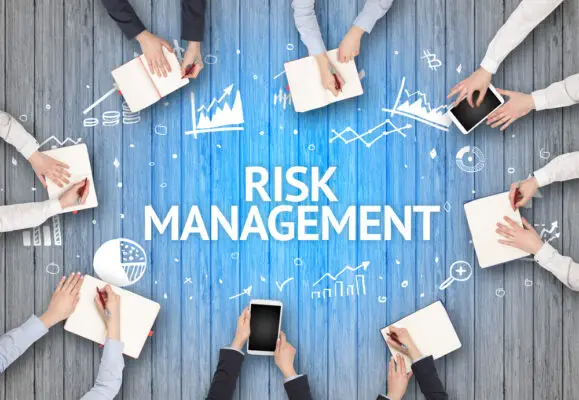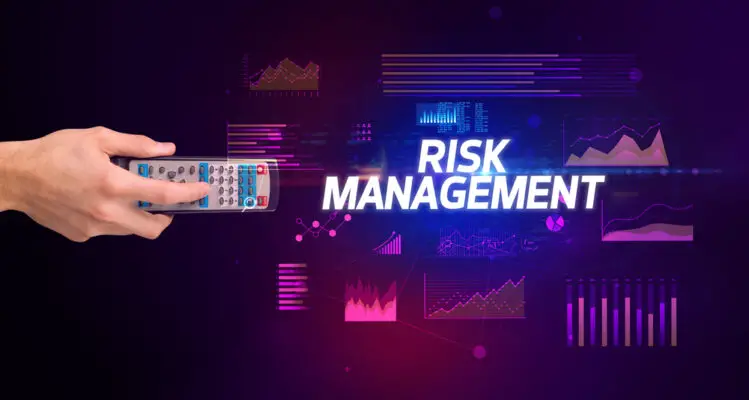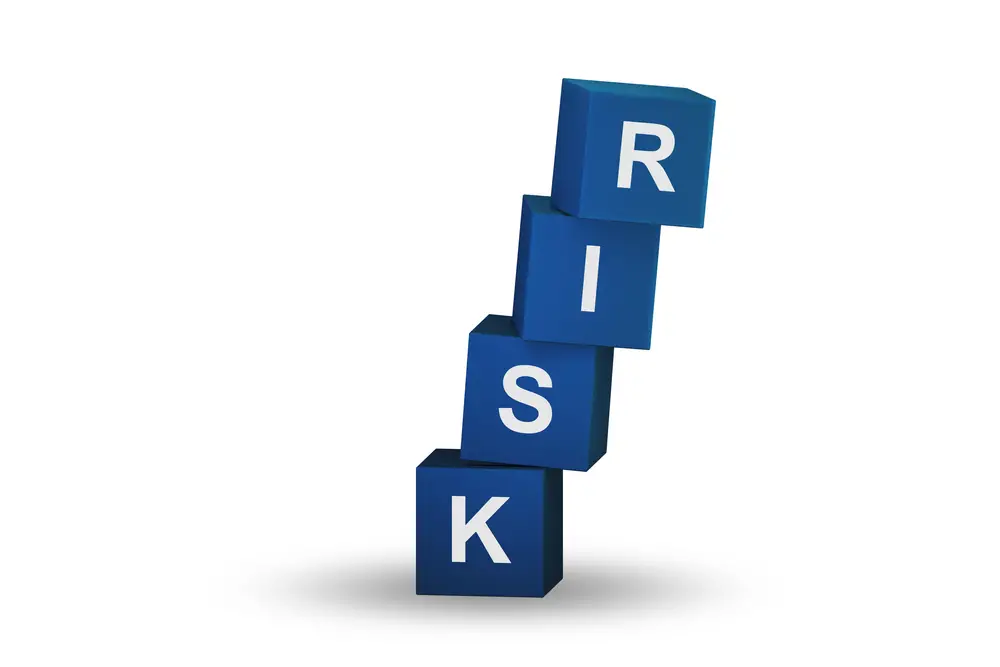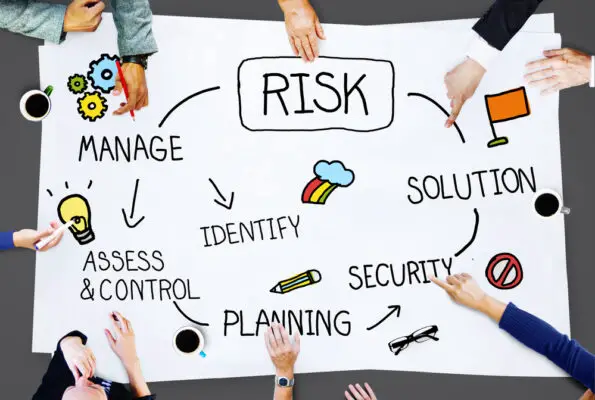Risk management is an integral part of any project management process. It involves the identification, assessment, and mitigation of risks that can potentially threaten the success of a project.According to the World Economic Forum’s Global Risks Report 2021, the top five global risks by likelihood over the next 10 years are extreme weather events, climate action failure, human-made environmental disasters, infectious diseases, and biodiversity loss.
Through using risk management practices, project managers can proactively address and manage the risks associated with their projects to ensure that they are completed on time and within budget.
Risks are often regarded as a risk that could be prevented. However, we know that the path to success has risks as it usually involves new opportunities that will yield positive risks and higher results. Projects are always subject to uncertainty.
Although uncertainty seems unmanageable and not so quickly managed, risk management should be an important aspect of success. How do I manage risks within a company? What difficulties does this pose?
Let’s take a closer look at why risk management is so important in project management.
Reduce Uncertainty
Projects often involve many unknowns, which can lead to uncertainty and unexpected delays or cost overruns. Risk management helps reduce this uncertainty by identifying potential risks before they happen and creating plans to mitigate them.
Through assessing potential risks early on in the process, project managers can make sure that they are prepared for any unforeseen issues that may arise during the course of a project. This will help ensure that projects run smoothly and are completed efficiently.
Improve Efficiency
The more time spent dealing with unexpected risks, the less time available to focus on other tasks such as planning and development. This is why it’s important to have a comprehensive risk management plan in place that covers all aspects of a project from start to finish.
This will help streamline processes and improve efficiency by reducing the amount of time spent dealing with unexpected issues or delays caused by unforeseen events or circumstances.
Increase Probability of Success
In proactively addressing potential risks before they occur, you increase your chances of achieving successful outcomes for your projects. Risk management helps identify areas where additional resources may be needed or where changes need to be made in order to better manage the project’s timeline or budget constraints.
What is the Risk Management Process?
Project risk management is an essential part of any project. It helps to identify, assess, and monitor risks that may arise during the course of a project. By identifying and monitoring project risks, organizations can ensure that they are able to mitigate potential issues before they become major problems.
Project risk management involves assessing the likelihood of certain events occurring and taking steps to reduce or eliminate their impact on the project. This includes developing strategies for dealing with potential risks, such as creating contingency plans or implementing preventive measures.
Overall, effective project risk management is essential for successful projects. By properly identifying and monitoring potential risks, organizations can ensure that their projects are completed successfully and efficiently.
Risk management is a process used to identify, assess, manage, and monitor potential risks in order to minimize the negative impact they may have on an organization. The risk management process typically follows five steps: identify the risk, analyze the risk, prioritize the importance of risk management, treat the risk, and monitor the results.
The first step of the process is to identify any potential risks that could affect an organization. This involves analyzing current operations and processes as well as external factors such as economic conditions or changes in legislation. Once potential risks have been identified, they must be analyzed in order to determine their likelihood of occurring and their potential impact if they do occur.
Once all potential risks have been identified and analyzed, they must be prioritized based on their likelihood of occurring and their potential impact. This helps organizations focus on the most important risks first so that resources can be allocated accordingly. After prioritizing the identified risks, organizations must decide how to treat them. This could involve taking preventative measures or creating contingency plans for when a risk does occur. Finally, it’s important to monitor the results of any actions taken to ensure that they are effective in mitigating any potential risks.
Overall, a comprehensive risk management process is essential for any organization looking to reduce its exposure to potentially damaging events or situations. By following these five steps – identifying the risk, analyzing it, prioritizing it, treating it, and monitoring it – organizations can ensure that they are prepared for whatever challenges may come their way.
Why is Risk Management in Projects Often Ignored?
Risk management plays an important role in project management, however, is sometimes overlooked in management because of the assumption: Risk management can help reduce projects costs by outweighing negligence costs.
The attitude of the management reflects ignorance of risk management. If the project doesn’t use effective risk management strategies it could result in catastrophic results. Take examples of the possibility that one of your machinery components could break during a construction stage.
Project risk management is an essential part of any project, but it is often overlooked or ignored. This can be due to a lack of understanding of the risks involved and how to manage them, or simply because the project manager doesn’t have enough time or resources to devote to risk management.
Risk management involves identifying potential risks and developing strategies to mitigate them. It also includes monitoring the progress of the project and responding quickly when risks arise.
Unfortunately, many project managers don’t prioritize risk management because they don’t see it as a priority or they don’t understand its importance. They may think that it’s too complicated or time-consuming, but in reality, it can be relatively simple if done correctly.
Risk management should be seen as an investment rather than a cost; by taking the time upfront to plan for potential risks, projects are more likely to succeed in the long run.

How to Manage Risk
The first steps to managing risk are to establish clearly what your project is supposed to do. Create and deliver your own detailed project charter. It is possible to identify the risk at each stage of the development process.
Similarly, you can involve your employees to identify risks early. Make sure you also involve your own team member when determining risk factors. Many project managers email project team members asking for anything that they think could go wrong.
projects come with inherent risks, and managing them is a key part of successful project management. Risk management in project, involves identifying potential risks, analyzing their impact, and developing strategies to minimize or avoid them. Here are some tips for managing risks in projects:
Identify potential risks: The first step in risk management is to identify potential risks that could affect the project’s success. This includes both external factors such as changes in the market or economic conditions, as well as internal factors such as team dynamics or resource availability.
Analyze the risk analysis and the impact of each risk: Once you have identified potential risks, it’s important to analyze their impact on the project. This includes assessing the probability of each risk occurring and its potential impact on cost, timeline, quality, and other project objectives.
Develop strategies to mitigate or avoid risks: After analyzing the impact of each risk, you can develop strategies to minimize or avoid them altogether. These strategies may include additional resources or personnel, changes in scope or timeline, or contingency plans for responding quickly if a risk does occur.
Monitor progress and adjust accordingly: As the project progresses, it’s important to monitor progress closely and adjust your strategies accordingly if any new risks arise. Regular communication with stakeholders can help ensure everyone is aware of any changes that need to be made in order to keep the project on track.
Advantages of project risk management
Here are some of the advantages of project risk management:
Improved Project Outcomes: By identifying potential risks before they occur, project teams can take steps to mitigate them and improve the chances of a successful outcome.
Increased Efficiency: Risk management helps identify areas where processes can be improved or streamlined, leading to increased efficiency and cost savings.
Enhanced Communication: By involving stakeholders in the risk management process, teams can ensure that everyone is on the same page and working towards a common goal.
Reduced Stress: Risk management helps reduce stress by providing a clear plan for dealing with potential issues before they become problems. This allows team members to focus on their tasks without worrying about what might go wrong.
Overall, project risk management is an essential part of any successful project and should not be overlooked or underestimated. By taking proactive steps to identify, analyze, and respond to risks, teams can ensure that their projects are successful and achieve their desired outcomes.
Among other benefits of Project Risk Management are: – Avoiding or minimizing potential problems – Risk management allows the reduced probability of surprise; – Recognising risks early in the planning process when they are easily manageable.
How to Manage Project Risks?
To manage risks, it is important to define your goal. Write an elaborate project charter with the project objectives outlined in the project timelines. The method allows risk assessment throughout a project.
It also is essential that you have early involvement in detecting potential risks. Don’t be afraid to work with multiple people when necessary in the process of risk assessment and prioritization.
The majority of project risk managers send out emails and request things that could prove disastrous. During project risk identification, the team will use brainstorms. Risk identification is entered on a project risk list.
Develop Risk Responses
Here you can plan responses to the high-priority and negative risks, and assess the low-priority risk on a watch list. Negative risk management means avoiding them or minimizing its impact or probabilities. Conversely, a positive risk strategy should aim at maximizing its positive effects on society.
Developing effective risk response strategies is a key component of successful project risk management. Here are some tips for developing responses to project risks:
Avoidance – This involves avoiding any activity that presents a risk, or reducing the amount of exposure to that activity.
Transfer – This involves a risk owner transferring all or part of the consequences of a potential risk to another party, such as an insurance provider.
Mitigation – This involves making changes to reduce the probability and/or impact of potential risk. For example, this could involve increasing quality assurance checks or providing additional resources for a task.
Acceptance/Retention – If it’s not possible (or desirable) to avoid, transfer, or mitigate potential risk, it may be necessary to accept risk register or retain it. In these cases, careful monitoring and control will be needed to ensure the risk remains at acceptable levels.

Project risk management planning
Risk management plans are living documents that are constantly reviewed as the project progresses. The plan needs to identify risk factors associated with projects and describe their risk management processes and methods.
The purpose of the work is to ensure the project is running smoothly. A risk management strategy is essential for the successful execution of a project. The initial stage of developing a risk mitigation strategy and management plans is the identification of potential risks to a project. If risk assessment is completed the priority is determined by the probability of its occurrence and potential effects.
Monitor and Control Risks
These procedures will help track your Risk Management performance. If risk management is not effective you may modify this plan as required by law. Conduct risk audits to ensure that the risk response plan has the necessary implementations to meet the plan’s requirements. Continual monitoring quantitative risk analysis is required. Keep this risk database regularly updated.
Monitoring and controlling risks is a critical component of successful project risk management. It involves keeping track of potential risks, assessing the likelihood they will occur, and taking action to mitigate or address them if necessary. Here are some best practices for monitoring and controlling risks across your project:
Monitor Potential Risks – By continuously monitoring potential external and internal risks together, you can quickly identify new threats as they arise and take action before they become more serious.
Estimate Impact & Probability – Estimating the impact and probability of each potential risk will help you prioritize which to address first.
Take Appropriate Action – Once you’ve identified a risk that needs to be addressed, it’s important to take appropriate action in a timely manner. This may include revising deadlines, updating budgets, or developing contingency plans.
Track & Report Progress – Tracking progress towards addressing each risk and proactively reporting on your progress is essential for keeping stakeholders informed and ensuring success.
Managing Risk throughout the Organization
How does risk management affect businesses? Yes. The incorporation of risk management practices into the culture of an organization reduces costs over the long term through the creation of standard toolkits.
It’s not like reinventing the wheel many times. Risk management system in organizations is of key importance. Your organizational files provide you with the information you need for future success. When a risk occurs, preparing your game plan can help minimize the effects of this risk event. Risk Management frameworks – policies and strategies are utilized to perform risk management.
Managing risk throughout an organization is essential for successful business operations. Here are some best practices for managing risk at the organizational level:
Develop a Risk Management Strategy – The first step in effective risk management is to develop a risk management strategy that outlines how risks will be identified, evaluated, and addressed.
Establish Risk Governance Structure – Establishing an appropriate governance structure can help ensure that potential risks are adequately identified, evaluated, and addressed across the organization.
Foster Collaboration & Communication – To effectively manage risk, it’s important to foster collaboration and communication between departments and stakeholders. This will help ensure everyone understands the potential risks, their impact on the business, and what can be done to address them.
Monitor & Review Progress – Regularly monitoring and reviewing progress towards addressing each identified risk is essential for ensuring success.
Challenges in identifying project risks
Sometimes project management may stumble on stakeholder unwillingness to identify project risks because they are too optimistic in implementing the project and do not consider them important and worthwhile for the project. Solution: Communicate with stakeholders and show the value of managing risk.
Identifying and assessing project risks can be a challenging undertaking, but it’s an essential part of successful risk management. Here are some common challenges to consider when identifying project risks:
Lack of Shared Understanding – It’s difficult to identify potential risks if stakeholders have different understandings of the project objectives and scope.
Unclear Goals & Objectives – Without well-defined goals and objectives, it’s difficult to anticipate potential risks and plan accordingly.
Poor Collaboration – Poor collaboration between stakeholders can lead to delays in addressing potential risks or overlooking important details.
Limited Resources & Insight – Resource constraints or lack of insight into the project can make it difficult to identify all potential risks.
Difficult to Quantify Risk – Some risks may be hard to quantify, which can make it difficult for stakeholders to prioritize them correctly.
Problems with Risk Management in Projects
When organizations don’t adopt risk management strategies, the challenge of convincing them is overwhelming. The management sees that this adds a further financial burden and there’s no monetary gain.
Explain risks by explaining project costs with and without them. Failure of an undertaking is an example of not following risk management practices. Show the enterprise risk management how much probability it will achieve in both cases without risk management. This is possible using Monte Carlo analysis. It’s hard to dispute a valid argument supported by data analysis.
Conclusion
Risk management is essential for any successful project manager as it helps identify potential problems before they occur so that solutions can be implemented quickly and effectively. By proactively addressing potential risks, you can also increase efficiency by reducing delays caused by unforeseen events or circumstances
It also improves your chances of achieving successful outcomes for your projects. In short, risk management is an invaluable tool for any serious project manager looking to achieve successful results for their projects without sacrificing quality or incurring additional costs due to poor planning or mismanagement of resources.

Chris Ekai is a Risk Management expert with over 10 years of experience in the field. He has a Master’s(MSc) degree in Risk Management from University of Portsmouth and is a CPA and Finance professional. He currently works as a Content Manager at Risk Publishing, writing about Enterprise Risk Management, Business Continuity Management and Project Management.


